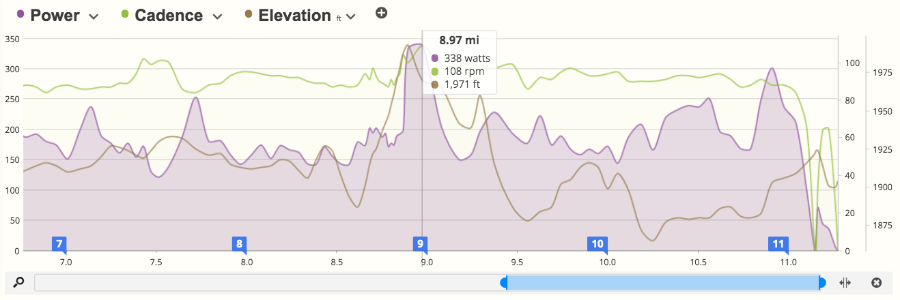What is Good Cycling Cadence?
How to use bike cadence for faster and more efficient performance
In cycling, cadence is the number of times your pedals make a complete revolution in a minute. It's important to track because maintaining a high cadence can reduce fatigue and help your muscles be more effective for sprints, attacks, and the final kick. Cadence is popular in road cycling, triathlon, indoor riding, and even in spin-bike fitness classes and platforms. Despite being everywhere, it's not obvious how to interpret it — because your ideal cadence will be different depending on a number of factors. In this article, we'll take a close look at cadence and help you determine the best number for your goals.

The basic approach
The great thing about cadence is that it's conceptually easy to understand. The metric you see on your bike computer, sports watch, or indoor riding display is the number of times you will spin the cranks in 60-seconds based on your current rate. No complicated math or esoteric physiological data is involved.
Where cadence gets a little tricky is determining your ideal target. The general consensus among cyclists and coaches is that higher cadences, which would typically be above 85 RPM (Revolutions Per Minute), are preferable. In order to get your legs spinning that quickly, you need to ride in easier gears, often using the smaller chainring up front and a larger sprocket on your rear cassette. Because less tension is in the cranks, riding becomes more of a cardiovascular workout as opposed to a grinding muscular one.
Higher cadences are beneficial for longer endurance rides and races, as opposed to short sprint distances. So one option is to keep things simple by riding in the 85 - 105 RPM range while maintaining the same speed and power output you would hold at lower cadences. But what if you want to get even more specific and exact?
Finding your ideal cycling cadence
Cycling is a sport that's loaded with variables. Courses have varying terrain, and your cadence will tend to be higher in the flats and lower when you climb. Athletes vary quite a bit. More muscular riders may find that they perform better using lower cadences, even at endurance-length distances. Lean riders often find that they perform better using higher cadences, opting for a more aerobic efforts. However, these are not hard rules. Despite your body type, you may find that you prefer mashing over spinning, or vice versa.
...intentionally train using both higher and lower cadences.
Unlike determining your current cycling FTP, there isn't a cut-and-dry test you can execute to find your ideal cycling cadence. The best advice is to intentionally train using both higher and lower cadences. You want to develop the ability to hold high cadences for long periods of time, and you also want to keep your fast-twitch muscle fibers engaged by training in harder gears at lower cadences. Like doing cycling-specific strength training at the gym, it's important to mix it up and to remain well-rounded in your fitness.
Finding your ideal cadence largely comes down to feel, once you've adapted to training at different intensities. Why track cadence at all when it's perception based? First off, without tracking you lose the ability to precisely train at low and high cadences. Secondly, you can choose to ride by feel, but when a workout or race starts to make you tired, you can intentionally switch to maintaining a high cadence, which will be more of a workout for your heart but will keep you from deeply fatiguing your muscles.
Post-workout cadence analysis
SportTracks gives you powerful tools to create custom workouts for cadence training, and to deeply analyze your cadence data afterward. In the Training Options of your account, you can easily create custom cadence zones for cycling. You can make as many or as few zones as you like, and you can also create custom cadence zones for running, swimming, skiing, rowing and more.
You can also make custom multi-step workouts with warmup steps, targeted cadence steps, recoveries, etc. These workouts can be exported as FIT or TCX files, or if you use Garmin, they will automatically be sent to your watch or bike computer by enabling our integration. Any workout you create in your SportTracks calendar can be dragged to your Workout Library so you can easily use it again.

Speeding up while descending in Zwift to lose a competitor 9 miles into an e-race
In your workout detail pages, you can quickly compare your cadence against other performance data from the ride, such as power, elevation, speed, VAM, and more. Clicking and dragging on this chart enables you to view custom segment details, such as a breakout chart of your cadence zones. You can also analyze heart-rate zones, power zones, and more. This screen also lets you overlay cadence data against critical power.
At its core, cycling cadence is pleasantly simple, but it's also a metric that you should always stay aware of. Intentionally train it, rely on it in races, and analyze it afterward to see how well you maintained your targeted zones, and if there were any surprises that could inform future efforts.
| Article written by Sam Mallery, Director of Marketing, Zone Five Software Inc. |
